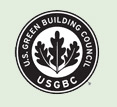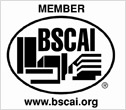Green Cleaning
Green cleaning can be defined as cleaning to safeguard human health without harming the environment. It is a basic approach that can be built into any efficient, organized well-executed cleaning system-whether done by night or day, in teams or in zones. Its goal is to protect the health of building occupants, visitors, and cleaning personnel, as well as reduce polluting effects on our air and water.
Unlike traditional cleaning, it goes far beyond simple appearances, focusing on products and services that have fewer adverse health and environmental impacts as compared with others that may be used for the same purpose.
Green cleaning is a term that describes a growing trend in favor of using cleaning methods with environmentally-friendly ingredients and chemicals to preserve human health and environmental quality. Green cleaning techniques and products avoid the use of chemically-reactive and toxic cleaning products which contain various toxic chemicals, some of which emit volatile organic compounds (VOCs) causing respiratory and dermatological problems among other adverse effects.
Green cleaning can also describe the way residential and industrial cleaning products are manufactured, packaged and distributed. If the manufacturing process is environmentally-friendly and the products are biodegradable, then the term “green” or “eco-friendly” may apply.

Benefits of Green Building
Environmental benefits:
- Enhance and protect ecosystems and biodiversity.
- Improve air and water quality.
- Reduce solid waste.
- Conserve natural resources.
Economic benefits:
- Reduce operating costs.
- Enhance asset value and profits
- Improve employee productivity and satisfaction
- Optimize life-cycle economic performance
Health and community benefits:
- Improve air, thermal, and acoustic environments
- Enhance occupant comfort and health
- Minimize strain on local infrastructure
- Contribute to overall quality of life





